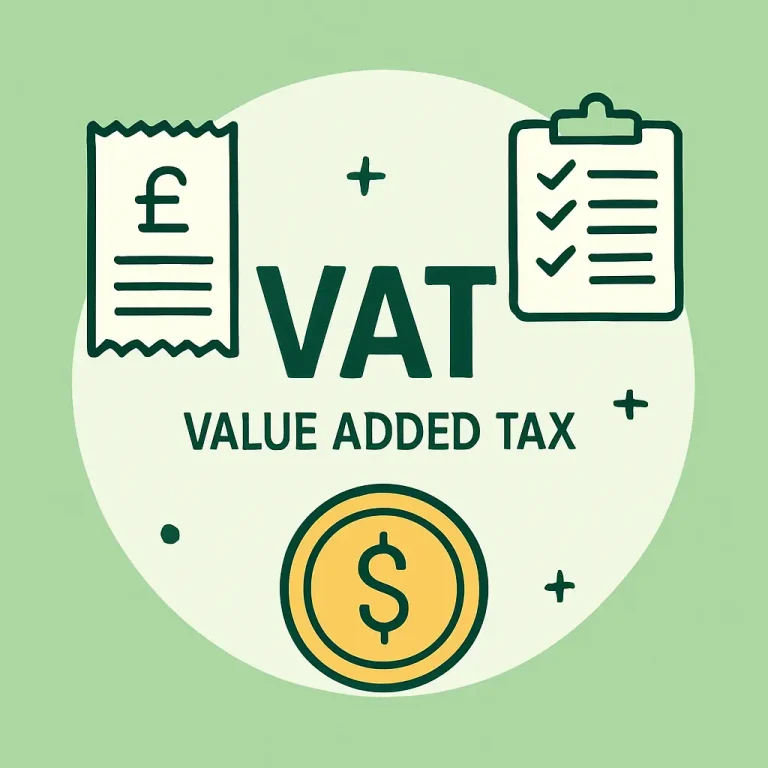VAT Calculator
VAT Calculation Results
Calculate VAT Online
Are you tired of guessing the final product price when shopping online or in a physical store? First of all, guesses don’t bring accuracy. Do you have any idea how risky it is that you are just guessing the base price of a product and VAT as a seller or a buyer? A minor mistake can result in severe penalties from legal authorities.
I know, calculating VAT is not as simple as it seems because it includes technical mathematical formulas to include or exclude the taxes. Surviving a day-long with manual calculations is not easy. Therefore, don’t take the stress of the numbers and say hello to our user-friendly, fast, and accurate VAT Calculator. All you need to just enter the amount, choose the VAT rate, and leave everything to our VAT Calculator UK.

What is VAT?
VAT stands for Value Added Tax. As the name suggests, it is the type of tax that is added to the price of goods and services. That’s why this tax is also known as GST(Goods and Services Tax) and GCT (General Consumption Tax). Let’s make it simple for you. For instance, if you purchase the shoes worth £100 and the VAT rate is 20%, you will pay £120 finally. This way, £20 is charged by the government.
VAT is an indirect tax because a buyer is an entity that pays VAT as the total price of the product, but the buyer is not directly involved in dealing with tax authorities. At the backend, businesses or sellers pay tax to the government. It is also true that not all goods and services are eligible for VAT; for example, you don’t pay VAT when you get healthcare and educational services.
The government also does not charge VAT on the products that are exported to other countries. For instance, if a company in the United Kingdom sells its products to customers in the United States, such products will be VAT-free because these products will not be used inside the country (the United Kingdom). Thus, the VAT rate is decided on the place. When you get the Germany-based book in the UK, the VAT will be according to the policies of the United Kingdom.
The current VAT rate in the United Kingdom is 20%. The businesses or companies of the United Kingdom pay VAT based on their annual sales. If you are looking for more, there are two more categories, including a Reduced Rate of 5% and a Zero Rate. The government introduced a “Reduced Rate of 5%” for some goods and services. The purpose was to promote the following businesses, such as hotels, zoos, cinemas, pubs, concerts, shows, fairs, and cultural events.
Businesses selling things that are not taxed, like most food or children’s clothes. In this case, the government does not add VAT to the final price. However, the businesses pay VAT when making those items from their raw materials. The positive side is, they can get VAT refunded by the government. So, they can reclaim the VAT they spent on making or selling the goods.
Types Of VAT
Standard Rate VAT
This is the kind of VAT that people deal with the most. It commonly covers most of the products and services that consumers buy. A 20% VAT is applied to the selling price in the UK. When you buy clothes, electronics, or furniture, or have a meal in a restaurant, the usual price will probably apply to you.
Reduced Rate VAT
Some products are thought to be necessary or useful, so the government makes them cheaper with a cut in VAT. The rate is reduced to 5% in the UK. Examples are gas and electricity for energy, car seats for children, and energy-saving materials used around the house. VAT is applicable, but now it is charged at a much lower rate.
Zero Rate VAT
Zero-rated items should be taxed, though VAT is not applied to them. There is no VAT included in the customer’s bill, yet businesses can claim the VAT they spent on the production or sale of those items. This supports enterprises in focusing their budgets on growing the business and pricing goods for everyone. Most food, children’s clothes, books, and public transport are usually zero-rated.
Exempt from VAT
You do not pay VAT on these goods and services. So, businesses do not have to pay VAT, and they cannot reclaim VAT on any expenses involved in providing the goods or services. Normally, exemptions are given to sectors such as healthcare, education, insurance, and financial services. Visiting the doctor or making tuition payments may not have VAT.
Outside the Scope of VAT
Some transactions do not have VAT applied to them and are “outside the scope”. The NHS services are exempt; VAT does not come into play, and no VAT can be recovered. Some examples are paying employees, covering fines, or giving to charitable organizations. This kind of activity is not covered by the VAT regulation as the selling of goods or services.
|
Types |
Rate |
Charged |
Reclaimable |
|---|---|---|---|
|
Standard Rate VAT |
20% |
Yes |
Yes |
|
Reduced Rate VAT |
5% |
Yes |
Yes |
|
Zero Rate VAT |
0% |
No |
Yes |
|
Exempt from VAT |
- |
No |
No |
|
Outside the Scope of VAT |
- |
No |
No |
How To Use UK Online VAT Calculator
The standard VAT Rate is 20% which is fixed for most of the businesses. But if you are interested in finding a reduced rate of 5% then you can write it into the given “ VAT Field”. Moreover, you can change the VAT rate according to your needs (0-100)by moving the slider.
When To Register For VAT?
Check out all these terms and conditions before registering your business for VAT.
Note: In April 2024, the annual turnover for VAT registration was reduced to £85,000.
How to Get Your VAT Number?
In order to get your VAT number, you need to register your business. Before registration, read out all the above conditions carefully. After completion of registration from HMRC, you will get a unique 9-digit code called VAT number. With this VAT number, you can pay or claim VAT easily.
Various VAT Rate Schemes
Before registering for VAT, you need to tell HMRC( His Majesty’s Revenue And Customs) what kind of accounting scheme you will use for it. Although you can use a variety of accounting schemes and some of them are mentioned below. Let’s discuss them one by one.
Standard Accounting Scheme
In this scheme you keep a record of VAT you charged on sales and VAT paid on purchase, and claim VAT Return from HMRC every quarter. This VAT scheme is the preferred one.
Annual Accounting Scheme
In this scheme, you can submit VAT Returns on an annual basis but need to pay VAT quarterly. The quarterly payments are estimated on the basis of the last return.
Vat Flat-Rate Scheme
Instead of paying quarterly you can pay a fixed percentage of VAT to HMRC and also reclaim your VAT return. It’s a simple flat-rate scheme useful for small businesses. You can take advice from any Accountant or Bookkeeper if it makes sense for your business.
Cash Accounting Scheme
In all the above schemes, you will pay or claim VAT whenever the invoice is generated. In the case of Cash Accounting, you can pay or collect VAT when cash changes hands.
VAT Calculation Formulas
Basically, there are two main types of formulas for the calculation of VAT. One is the Add VAT Formula, while the other one is the Remove VAT Formula. See the sections below to calculate UK VAT.
Add VAT Formula
VAT Amount = Net Amount x Decimal Value Of VAT Rate = £300 x 0.20 = £60
Gross Amount = VAT Amount + Net Amount = £60 + £300 = £360
Remove VAT Formula
Net Amount = Gross Amount/ (1+0.20) = £360/ (1+0.20) = £300
VAT Amount = Gross Amount - Net Amount = £360-£300 = £60
Frequently Asked Questions (FAQs)
Final Words
If you’re a citizen of the UK, then you need this calculator to find out Add VAT or Remove VAT. The process is just to put an amount in the tool and press either the Add or Remove VAT button. Before using this amazing tool check the VAT Rates applicable on the goods. You can use a Standard VAT rate of 20%, a Reduced Rate of 5% or Zero VAT Rate.
